Round Table: Decolonizing landscape architecture, moving toward reconciliation
Moderated by Sheila Boudreau, OALA and Terence Radford, OALA
BIOS/
Sheila Boudreau, OALA, APALA, CSLA, RPP/OPPI, MCIP, BA, BLA, MA (Planning), is a landscape architect and registered professional planner with over 25 years of experience in both public and private sectors. She founded SpruceLab Inc. to focus on nature-based planning and design, and to support Indigenous initiatives.
Terence Radford, OALA, CSLA, has over seven years of experience in green infrastructure, landscape planning, urban design, Indigenous placekeeping, and environmental design. He has a Master’s in Landscape Architecture from the University of British Columbia. In 2017 he opened Trophic Design as a 100 per cent owned and operated Indigenous landscape architectural practice.
Catherine Tammaro is a multi-disciplinary artist whose practise spans decades. Catherine is a seated Spotted Turtle Clan Faith Keeper and is active throughout the City of Toronto and beyond, in many organizations as Elder in Residence, Mentor, Teacher, and Cultural Advisor. She is an alumna of the Ontario College of Art and is also the new Indigenous Arts Program Manager at Toronto Arts Council.
Eladia Smoke is the principal architect and owner at Smoke Architecture Inc. and a Master Lecturer at Laurentian’s McEwen School of Architecture. Planned or ongoing projects include the Dawes Road Library, in Toronto (with Perkins & Will); AND the Algoma University Mukqua Waakaa’igan, in Sault Ste. Marie (with Moriyama & Teshima).
Carolynne Crawley, founder of Msit No’kmaq, is Mi’kmaw and also has Black and Irish ancestry and is from Mi’kma’ki territory, also known today as Nova Scotia, but Tkaronto has been her home since she was young. She is dedicated to social and environmental justice and supporting Indigenous-led community work. Carolynne leads workshops for the public and private sector based upon Indigenous knowledges.
Grant Fahlgren is a member of Wabigoon Lake Ojibway Nation, and Chair of the CSLA Reconciliation Advisory Committee. He has a Bachelor of Environmental Design from the University of Manitoba and Masters of Landscape Architecture from the University of British Columbia. he won the CLSA Emerging Professional Award in 2021.
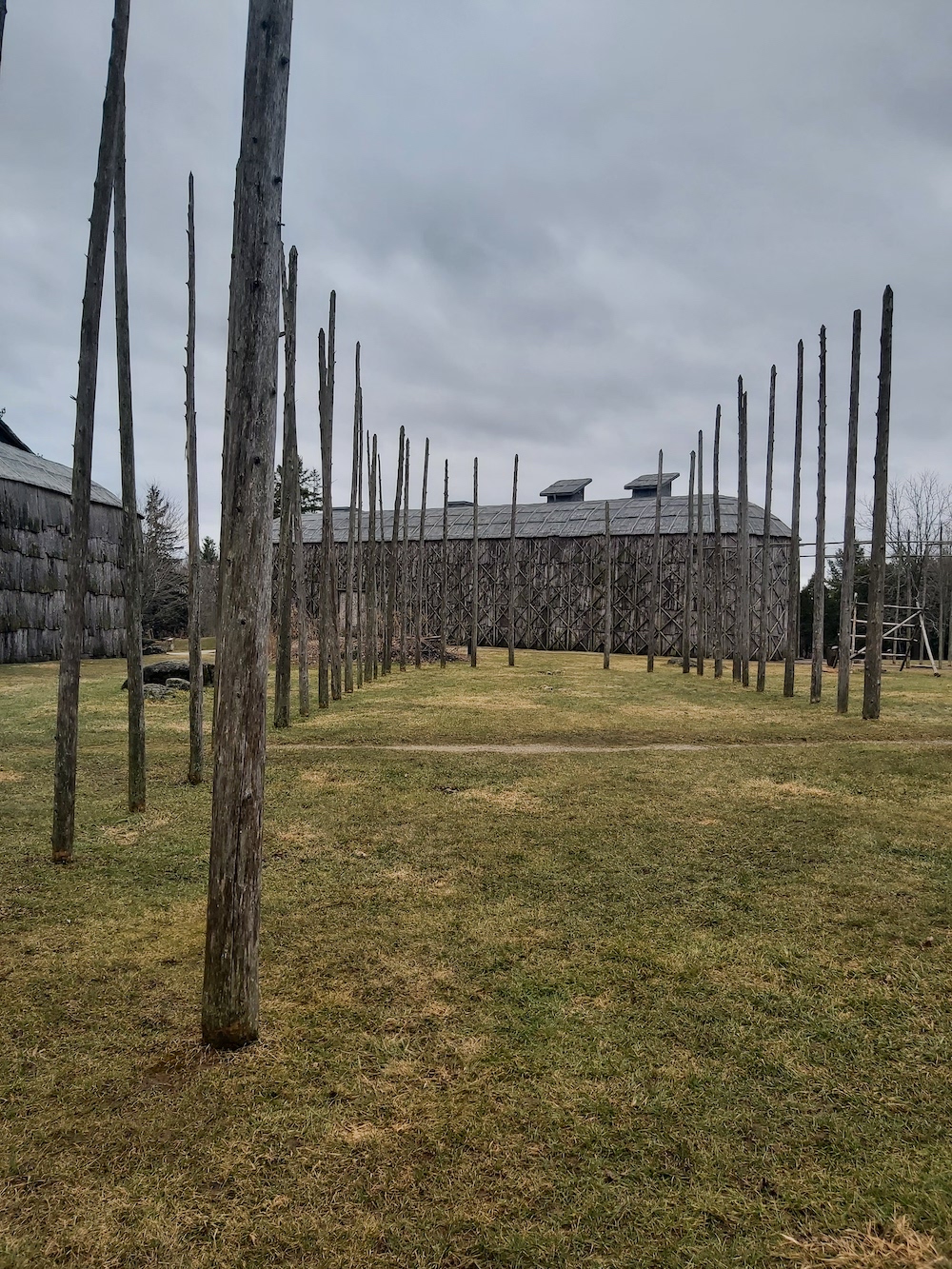
Terence Radford: Our guiding question is: how can practitioners work to create a culture of truth, reconciliation, respect, and celebration of Indigenous communities in the profession of landscape architecture? To start, are there best practices, programs, initiatives, or ideas that can foster these goals.
Eladia Smoke: We need more Indigenous design voices in landscape architecture, and throughout the building industry. All segments are quite underrepresented, and that has to do with the perception of ownership of land that has been overlaid on the continent. When you don’t own land, you don’t get to name it, decide what’s done with it, or occupy it. Those colonial strategies are all land-based.
What I’ve been hearing from communities is it would be nice to move away from the ad hoc approach, where a particular project leadership identifies the need for Indigenous perspectives, and then invites a community to come comment on that project. That has a lot of value, and it’s how we’ve been working ourselves. However, as a long-term strategy, this is a stopgap measure. What we need to have is, embedded in the approvals process, Indigenous voices formally invited for all major projects.
We do have precedence for this. Most major municipalities have an urban design panel, or something commensurate. The way I can see this unfolding, long-term, is to have expert Indigenous voices as part of the approvals process for new projects, and that we’re also part of the long-term and big-picture planning vision. For urban spaces, especially, but also for land use in general. Our communities take the responsibility of speaking for their territories very seriously. Unfortunately, they have very few formal and officially recognized avenues to exert their authority over what occurs on traditional territories. So, those modes of authority need to be sought out and initiated, as they just don’t exist right now.
Right now, we have a very piecemeal patchwork approach to any kind of a voice in land use, right down to the specificity of design. There’s just no overall organizational approach. In Anishinabek territory, how this used to get done was, (what I’ve been told from elders), through the clan system, which was our original governance structure in Anishinabek territories, and those clans would take responsibility over those territories under their purview. If we can somehow reconsolidate that approach, look back at our original governance structures, how we made land use planning decisions in the past, pre-contact times, I think that can really inform a way forward.
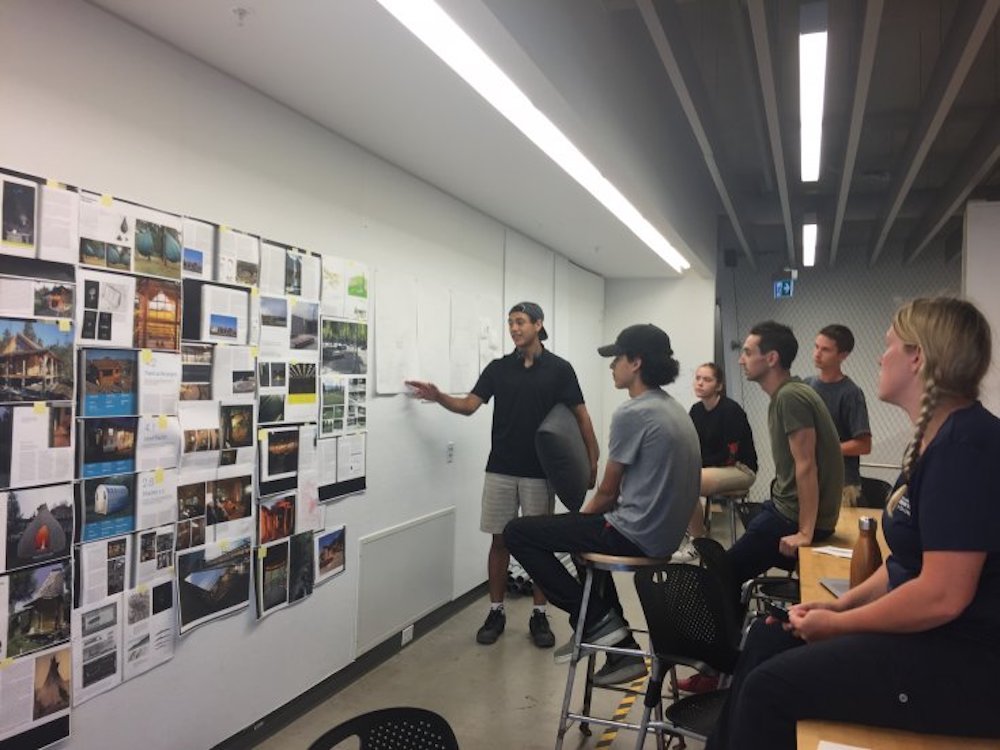
Sheila Boudreau: How can we position Indigenous communities at the beginning of the design process, especially when it involves landscape or land use?
Catherine Tammaro: I’m thinking of the site-specific aspect of each project and how one communicates with people, as well the ancestors, who are imbued in the land, and a particular space. Ceremony can be a component of this whole process with the Indigenous communities involved, and they can find a way to consolidate their views among themselves around how they want to proceed. And they should be automatically involved in every project that comes into that space. Around the world, there are specific spiritual spaces in various quarters of what are defined now as countries, with specific purposes that are spiritual in nature, and also designed through the cultural lens or spiritual practice they’re part of. That containment is a beautiful foundation, and a way in which to start any holistic process around negotiating these projects.
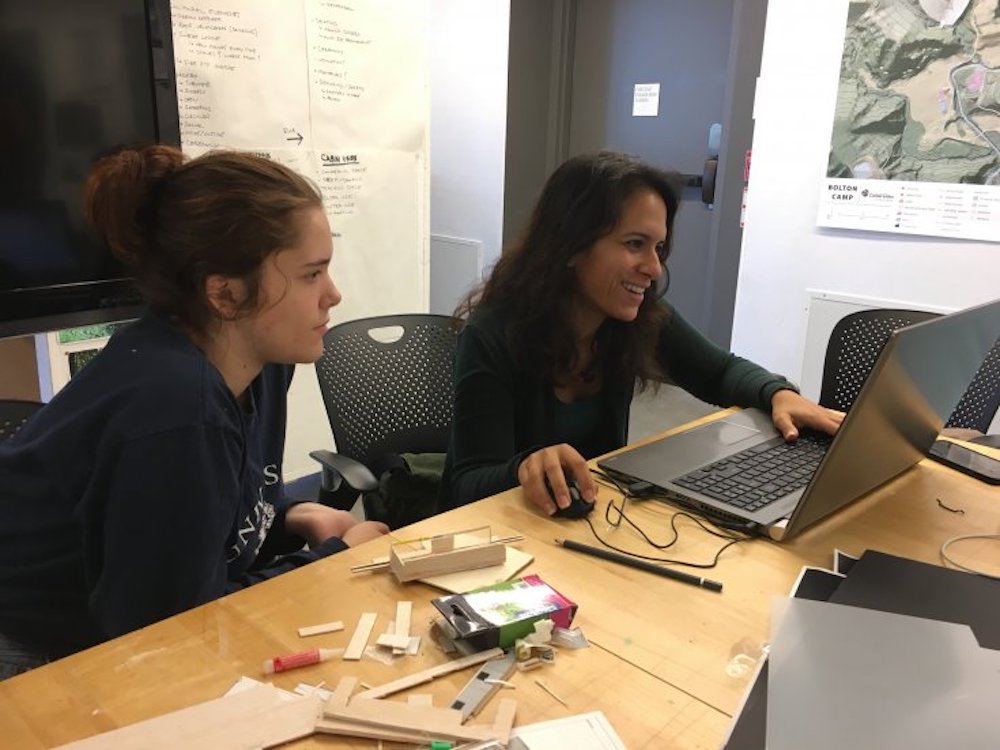
Carolynne Crawley: In terms of best practices to foster a culture of truth and reconciliation and respect, everybody has a responsibility to know the true history of what’s known today as Canada, and the colonial systems and powers still in place that continue to oppress Indigenous peoples, and to have an understanding of the treaty agreements.
Oftentimes, people who have the privilege to travel to another country where there’s a different culture will take time to learn a bit about that culture, the language, the food, and maybe even the politics and history of the place. But people don’t often make the effort to learn about where they’re actually living: that’s one big step everybody living and working upon these lands known today as Canada has a responsibility to do.
People are often doing land acknowledgements, and it’s important to acknowledge the land and the Indigenous peoples and nations whose territory we’re operating on. But it’s really important that it’s not just a checkbox. Otherwise, it’s just words with little-to-no action behind them.
In my neighborhood, there was a posting saying, “My land was stolen and all I got was this lousy land acknowledgement.” People aren’t putting any action towards these words. There’s an Algonquin Anishinaabe-kwe author, Lynn Gehl, who said in an article, “When your home gets broken into and a man walks off with your television, you discover years later that every time he turned on your television set, he acknowledged that it wasn’t his TV, but thanked you for its use, would you be okay with that?” She said, “I think I would be pissed.” So, what are these words? What else can we do, in regard to that reconciliation? It’s also about reparation. What is the individual, business, and collective action needed to reconcile and make those reparations?
There’s a turtle nest protection program we’re starting in the area called High Park, and it’s important we have people who are Turtle Clan involved in that from the very beginning, to guide us in that good work.
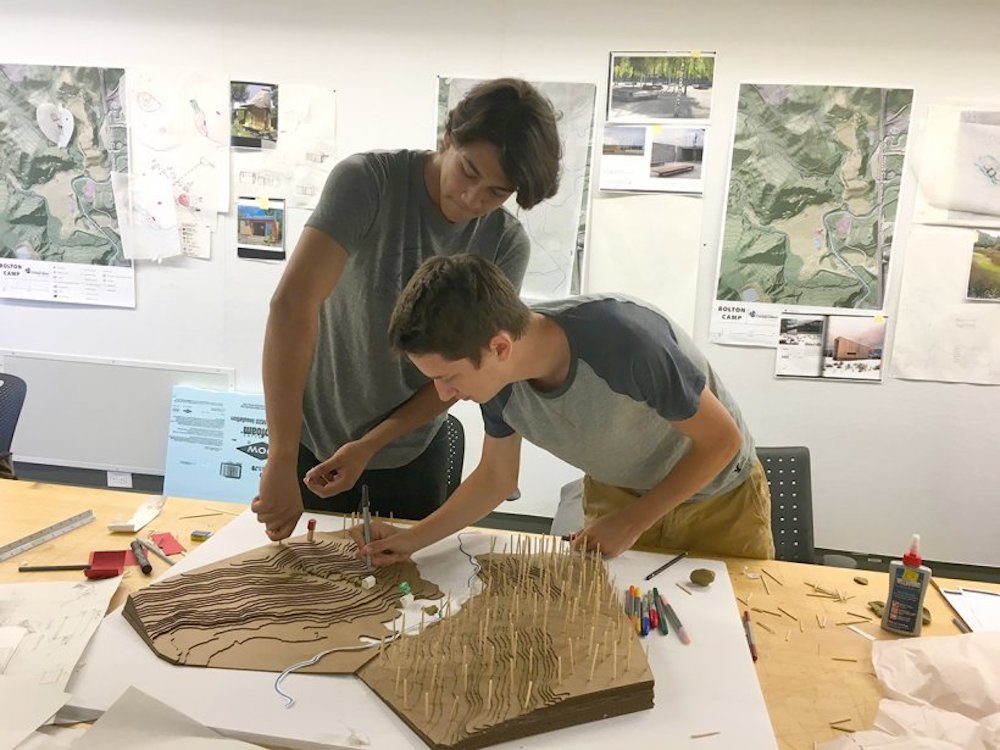
Grant Fahlgren: The first question is probably the thing practitioners come and ask us, members of the CSLA Reconciliation Advisory Committee, the most: “What are the right things to do? What are my best practices?” And the answer is never as easy or straightforward as they hope. Because, often, it’s based on relationship building. The onus is really on you, and these things cannot happen overnight. It’s you, as a practitioner, who has to understand and ask the questions, like Carolynne said, about whose land you are situated on? How did their culture evolve with the ecology and ecosystems they share the land with, over time? How is that interrupted by colonialism? What are the issues they face today in being able to carry out traditional practices? How might those traditional practices come back in the future, those stories be remembered and shared, and new stories be generated by engaging with the environment?
That’s sort of what we’re going towards, and the steps to get to there are about building relationships with people and changing, fundamentally, how we think about our cities: as interconnected sets of systems that include the ecological, the urban, and us, as people, and how we engage with them. That’s the space for Indigenous people to situate themselves in as guides, and bring non-Indigenous people on that journey. Because only Indigenous people have those thousands of years of knowledge about how these places have changed. And we’re about to see rapid changes in our environment with climate change, into the future. It’s on us right now to make sure we’re able to adapt to those changes, and that those new stories can be generated as the land changes, so our Indigenous cultures remain tied to the places in which they’re situated. Otherwise, the divide caused by colonialism is only going to become bigger as the land around us changes.
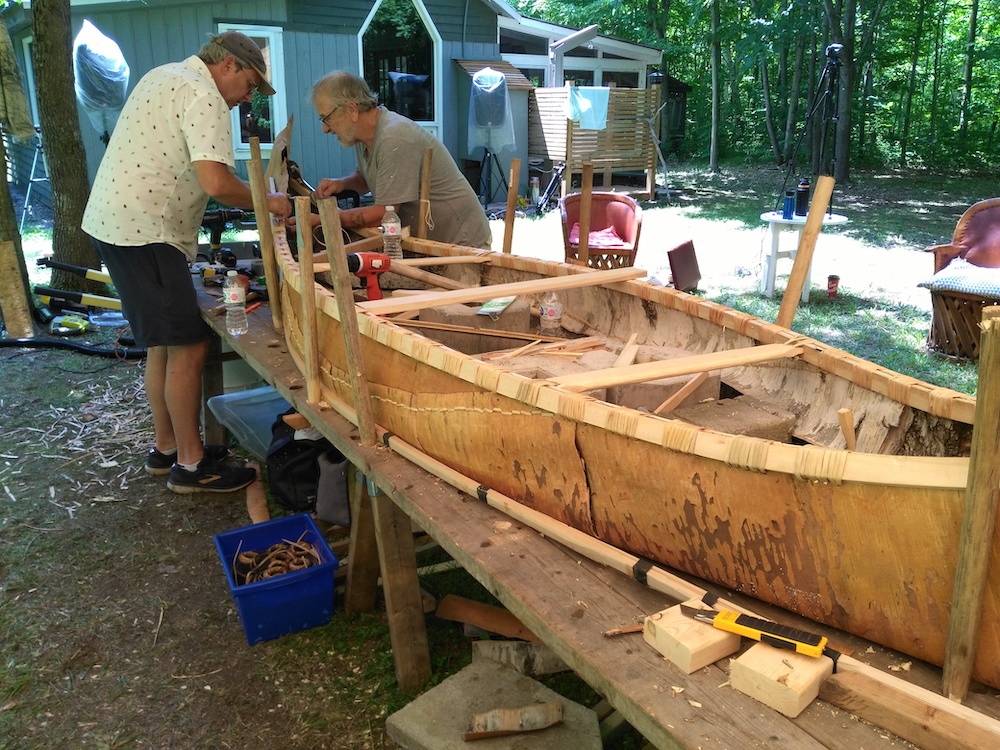
TR: Our third question, is about the term “decolonize.” I sometimes respond poorly to the term. What exactly does that mean? But we wanted to get your ideas and thoughts on the term “decolonize,” which is often used to refer to systemic changes in governance, or government in general. What does it mean to you?
SB: When I started SpruceLab, I was advised to not use the word “decolonize” anywhere on my website by non-Indigenous people that felt it was off-putting. I said, “Well, there’s a reason it’s on the website.” It was a tough conversation, but it’s still there.
CT: I always try to replace ideas of colonization with ideas of the continuum. I look at things in terms of the line of time that not only moves linearly, but is also all around us in relative ways. I have a visceral response to past conditioning: upchucking this dreck we’ve all been fed, this horrendous racism, the disproportionate and unwholesome ways of engaging with Indigenous people. That can be quite a tumultuous, sometimes disturbing, but ultimately incredibly liberating process.
Connecting with the continuum helps me get beyond, underneath, or around ideas of colonization. It means a direct connection with the land and water. If I get to those places and spaces, I’m somehow psychologically bolstered. It’s a psychological, spiritual, and political process. It’s changing the way you speak and think, and it touches every aspect of one’s life.
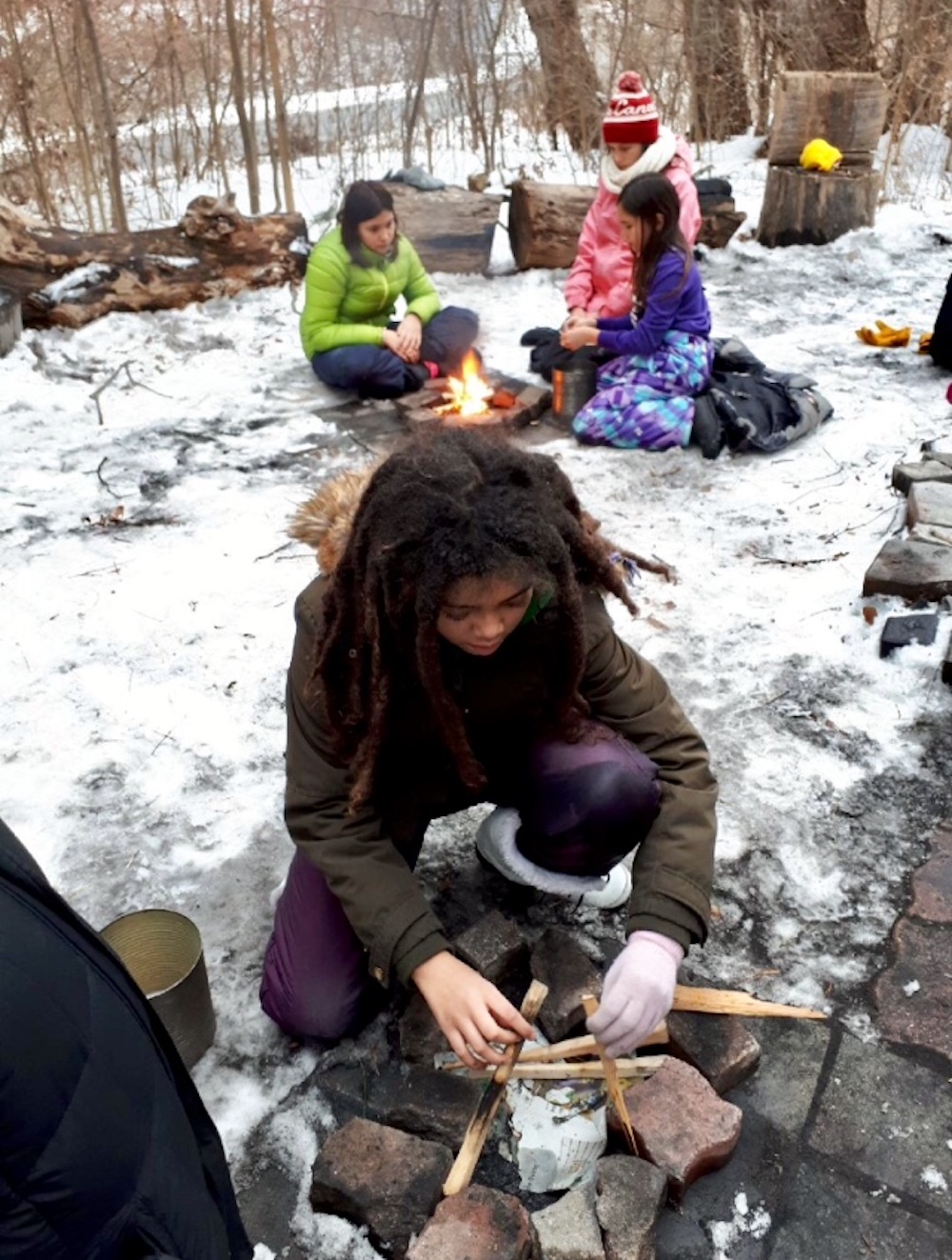
GF: To me, decolonization is about changing the structures that continue to harm our people—and those are embedded across our society. My biggest issue with the term is the way it centers settler society within this process. It doesn’t empower Indigenous people to do it, it suggests others have to provide the opportunity, and we should be so grateful to receive it. We have to change these structures, but we have to be active participants. To achieve reconciliation, society has to be reflective of our cultural perspectives, as well. It’s absolutely critical.
One way in which I don’t think a lot of people understand how colonization affects Indigenous peoples, when working in those communities, is how you go about funding projects and working with them: the money contributed by the federal government gets distributed based on need. Only those with the greatest need, where there’s truly a crisis, get funding. This makes a kind of sense, but it means communities approaching a critical need aren’t able to get funding. And so, the entire funding process is generating a crisis in and of itself, because they’re not thinking about how funding can go towards making sure communities are healthy in the way they operate. It’s going to those areas being triaged, with most need, and is not sufficient to stop a crisis from developing in the first place.
We, as Indigenous people, had ways to adapt and change in society. But colonialism fixed us on reserves, bound us there, put us into particular houses, and gave us infrastructural systems that cannot adapt.
The ways out of that are Indigenous perspectives. The old colonial attitudes are not going to get us out of this problem, it has to be new perspectives on how we think and relate, and we need to build that capacity on the Indigenous side, in order for us to move forward and be more self-sufficient—as we had been for thousands of years in these places. That’s why decolonization is an important process, but it’s only the first step within a larger process of building Indigenous capacity to realize change.
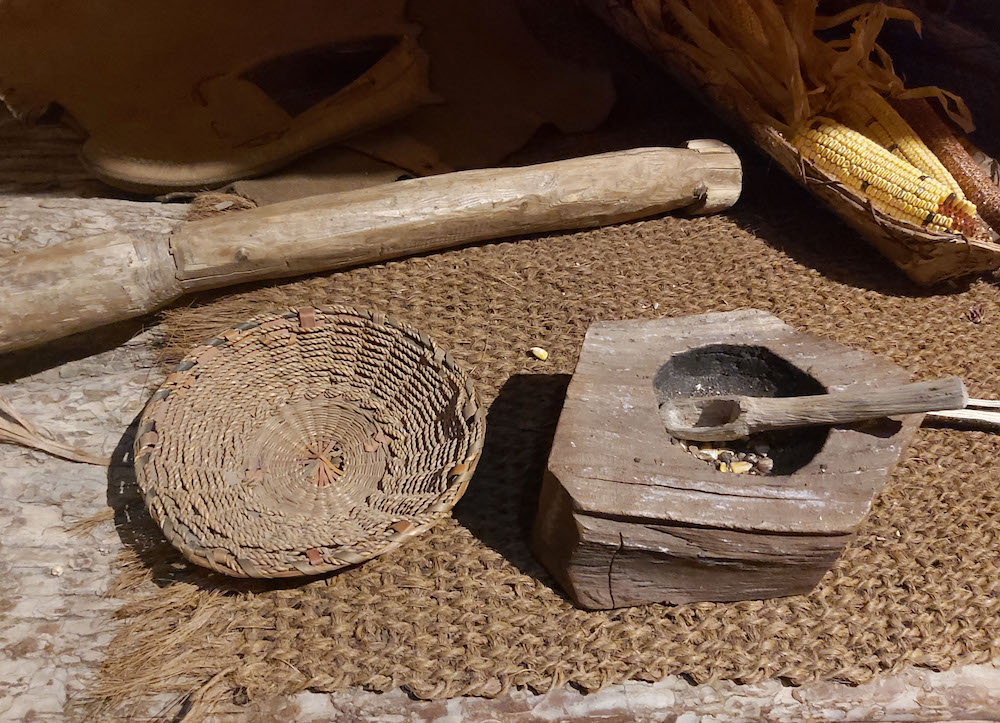
CC: I acknowledge and reflect upon the ways that I have been colonized, as an individual, and the impacts of colonization through generations, but my focus is about being guided by creation. Instead of focusing on colonization, I’m focusing on my Indigenous ways of being in relationship. It’s holistic. It’s about body, mind, and spirit; about self, others, and earth; and following the natural rhythms and walking in that good way. That’s where I put my attention to, and when I do, it’s automatically going to decolonize me.
CT: One of the things I do on a regular basis is land acknowledgement workshops with people, and we look at putting aside those colonial structures, and encouraging people to connect with the land itself as a way of opening their hearts to that acknowledgement process. When you connect deeply to where you are, who’s been there, and who continues to be there and is imbued in that land, you start stripping away the artificial constructs. The work produced in these workshops is phenomenal—the poetic and creative responses. It’s quite an amazing thing to witness, and it often ends in tears, and people having huge heart-opening realizations about power dynamics, the structures that exist and how they clamp down on the natural world, and how they need to be revoked.
SB: What can we do to ensure Indigenous people can pursue an education and career, and thrive in landscape architecture?
GF: As an Indigenous landscape architecture practitioner, what I heard throughout school was the importance of context. Designers and landscape architects talk about context all the time, but they really limit what context they’re going to pay attention to. My experience as an Indigenous person born in the North, then living in Winnipeg, and on the West Coast, (there are large Indigenous populations in all three of those places), is that I was a visitor on those territories, but the people whose traditional territory these places are were also treated as visitors by the very built environments in which they lived.
So, we really need to expand what we mean when we talk about context. How far back are we talking about? What relationships are privileged within those narratives? And if we, as Indigenous people, can’t see ourselves reflected in the built environment created by landscape architects, how can we imagine being in that profession, when it has not even acknowledged our presence?
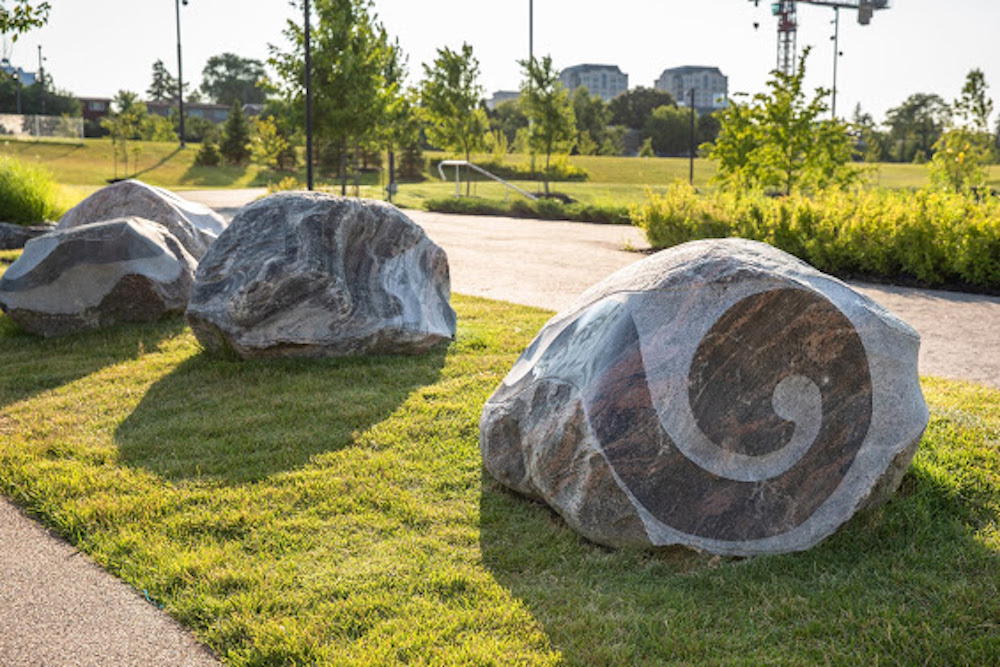
CC: If I don’t see anyone who represents me, or if there’s only a Eurocentric perspective, learning, or ideology being offered, I’m probably not going to feel welcomed, or may not be interested. You have to ask who the program is actually designed for? It’s important to include Indigenous ways of knowing or pedagogy—which is holistic and benefits all students.
It’s important for schools to build authentic, reciprocal relationships with Indigenous communities, elders, knowledge carriers, having Indigenous advisory circles or councils, and ensure there is welcoming space for Indigenous students.
GF: In bringing Indigenous youth into landscape architecture, it’s not only that we’re welcoming them, we have to appreciate what Indigenous knowledge can contribute to the profession. Working on the Canadian National Adaptation Strategy climate plan, we’re talking about metrics, and how to measure certain things—because they’re always fixated on quantification—instead of thinking about the relationships between elements. I think an Indigenous way of knowing would say you can’t just record one thing in isolation, you have to understand how different things interact. These ways of knowing are why we need Indigenous practitioners within the profession. Those stories aren’t just passed along readily to everybody, they are shared stories, held within particular families. And you need local practitioners who have that knowledge, shared with them by elders over a lifetime, to be able to bring that into our thinking in landscape architecture, and inform us of how we might better practice on these lands and think about the relationships between elements that have history reaching back thousands of years.
We need to appreciate how important it is, particularly for youth, to be able to ensure they can hold their stories, that they’re represented in the landscape, and can be passed onto future generations.
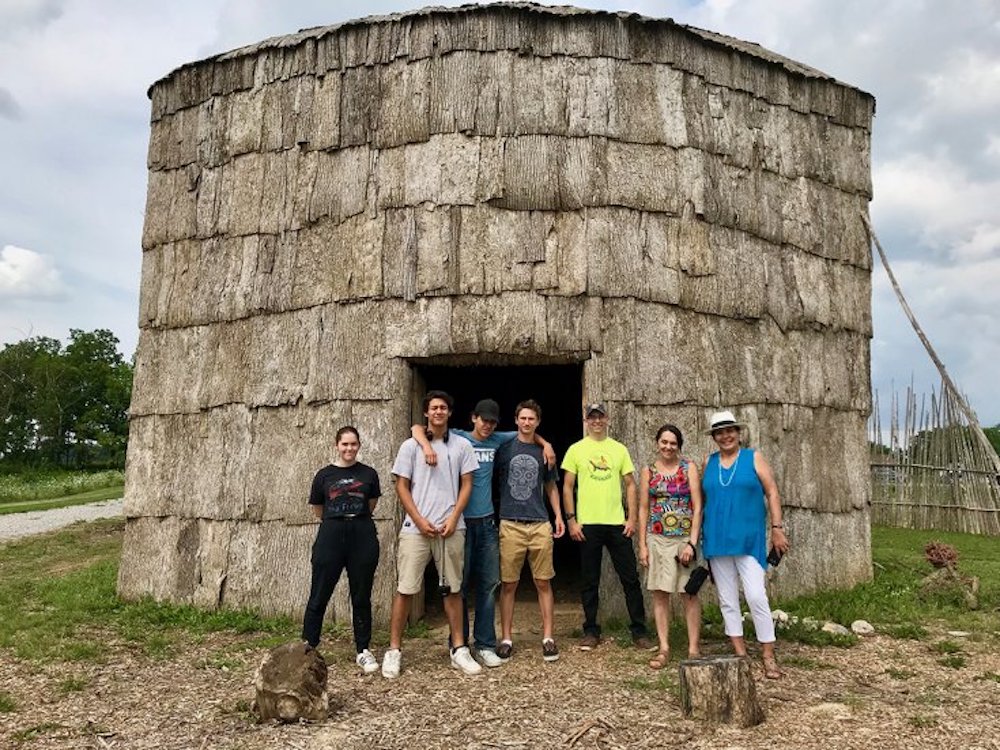
CT: I’m involved in four different projects in Toronto with landscape architects, and it’s been quite a process. I understand that people are working within certain frameworks, but I also feel very positive about the ways in which they’ve invited me into this process, and how they’ve relied on the information I’ve shared with them, and tried to use it in the best way, and for us to work in partnership toward the realization of these projects.
One of these projects I’m calling “Energetic Signatures,” which is a series of clan-based dodems (or totem) designs, which are being cut into bronze and embedded in the street from Spadina Avenue to McCaul Street, on the north side. There’ll be 22 of them, along with five signifier plates, and they represent all of the peoples, the nations, who traditionally have lived in this space. They’re meant to reflect sound songs, so they’re in an irregular, staggered pattern, to suggest a shuffle dance. It’s been going on for a year. I’ve done it, of course, with community consultation, because it’s essential to the process. I’m very excited to see what’s developing in the city, and to be asked to participate in these projects. I do think people are thinking about these things, and working hard at trying to incorporate Indigenous artists and designers into these spaces.
But I think you’re right about involving the youth. As somebody who works with youth in various capacities, it’s a great reminder to me to approach them about the idea of mentorship.
TR: How does living in the city, urban environments, public space, and the design of these, impact you as an Indigenous person. And has this inspired you to pursue change or specific activities in your life related to that urban experience?
CC: Public space design is very human-centric. It can lack an awareness of interconnected relationships. For example: lawns—whether in front of the house or an office building. There’s often turf or grasses not native to here. What are the impacts of those turfs? How does that impact birds, insects, and other beings, and other plant relations? There’s also an increased use of artificial turf in the city which, to me, is very problematic. I also think about city bylaws prohibiting grasses over a specific height, which decreases habitat and biodiversity, and the use of chemicals the city’s been using—such as glyphosates—for the past 20 years in High Park. What are those impacts?
I see that, and what inspires me is walking upon the earth thinking, always feeling, about the seven generations before me, but also those seven generations yet to be born. Not just generations of humans, but of all beings. Were all interconnected. I feel that I have a responsibility when I witness harm or injustices upon the earth, whether it’s in the city or elsewhere, and it reminds me of my individual responsibility to be in good relationship, defend, advocate for, and protect the earth in whatever way is needed.
But the land has also been harmed here by the impacts of colonization, so there needs to be reconciliation with the earth, the lands and waters, with all beings.
GF: My understanding of the city and public space is informed by what a lot would think of as its inverse: wilderness and wildness. I spend summers in Northern Ontario in complete isolation: no roads, being out on the lake that my European side has been on for over 100 years, working and witnessing what real wilderness is like. It informs me, as a person, about how our environments should be—because it’s protected by Caribou Woodland Provincial Park in Northern Ontario. Then I come back to the city where my family ended up because of colonial processes, including the Sixties Scoop my mother is a survivor of, which moved us from there into towns, from towns to cities.
So, when I experience a city, I see the way people have been decoupled from their environment and that the fields of architecture, landscape architecture, and planning have largely framed those relationships we have with our environments and have not created the space for it. When we spend time in parks, or walk our streets, we’re not asked to engage with them. We’re not asked to think about how their processes unfold over time. They’re held in a perpetual state of climax, or we have trimmed hedges, and we think about nature, and how things change over time, in a very peculiar way. The moments that have the greatest impact for me are when I’m in the city and I find that little sliver of wilderness, or aspect of nature, that breaks through all the systems we put in place in a city that says, ‘No, we want to hold things in a constant state and keep people from engaging with nature.’ It inspires me to pursue changing how we think about the landscapes we’re creating as practitioners, how can they be integrated into the natural systems we see breaking through in these spaces, about how Indigenous people can play a role in making sure they function well, because of our deep understanding of relationships.
Thanks to Nadja Pausch for coordinating this round table.
